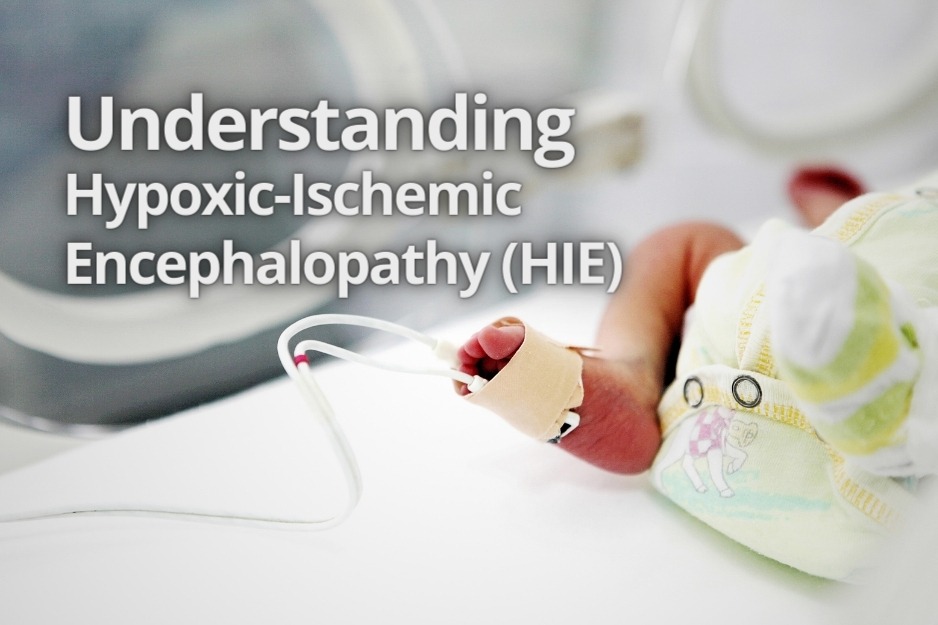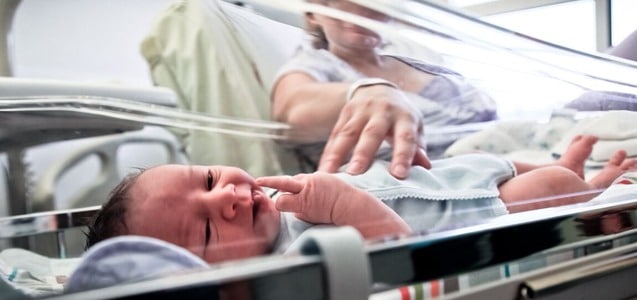Each year, 30,000 newborn babies face health complications during the birthing process. One of the most severe conditions that can occur during childbirth is Hypoxic-Ischemic Encephalopathy (HIE). This is a condition that affects a baby’s brain due to lack of oxygen.
This condition requires immediate medical attention and treatment in a neonatal intensive care unit (NICU). A traumatic birth experience can cause an HIE medical diagnosis as well as a cerebral palsy diagnosis.
A medical mistake can sometimes cause a traumatic labor and delivery. If your child has an HIE diagnosis, it is important to contact an HIE attorney. The Yost Legal Group helps families affected by a hypoxic birth injury and other types of childbirth trauma.
What is HIE?
Hypoxic-Ischemic Encephalopathy (HIE) refers to brain damage or injury caused by oxygen deprivation during birth. An HIE brain injury occurs when the baby does not get enough oxygen to the brain or blood flow before, during, or after delivery.
If left untreated or not diagnosed promptly, HIE can lead to long-term disabilities such as:
– cerebral palsy
– developmental delays
– seizures
– and death
What are the signs and symptoms of Hypoxic-Ischemic Encephalopathy (HIE)?
The symptoms of HIE vary depending on the severity of the injury.
Some common signs include:
– difficulty breathing or abnormal breathing patterns
– low muscle tone or limpness
– seizures or convulsions
– poor reflexes or response to stimuli
– an abnormal level of consciousness.
The causes of HIE can be due to various factors, such as:
– umbilical cord problems like prolapse or compression
– maternal infections
– placental abruption
– prolonged labor
– premature rupture of membranes
– medical negligence
What are treatment options for HIE?
Hypothermia therapy is the only way to treat HIE. It lowers body temperature to prevent more harm to brain cells.
Cooling techniques can include a cooling blanket for whole-body cooling or a selective head cooling process. Hypothermia therapy should be initiated as soon as possible, preferably within six hours of birth.
In addition to hypothermia therapy, other supportive treatments such as oxygen therapy, seizure management, and monitoring vital signs are also necessary. A baby with HIE will require a nursing care plan, including working with a medical team providing significant medical care.
What is a usual nursing home plan for Hypoxic Ischemic Encephalopathy (HIE)?
If you are a parent of a baby with cerebral palsy (CP) or Hypoxic-Ischemic Encephalopathy (HIE), it is essential to understand the nursing home plan for your child’s condition. HIE can result in long-term neurological damage.
A nursing home plan consists of various therapies and interventions that aim to improve the quality of life of children with HIE.
- Physical Therapy
Physical therapy is an integral part of the nursing home plan for children with HIE. The goal of physical therapy is to help children gain strength, improve mobility, and enhance gross motor skills. Physical therapists work on improving balance, coordination, and muscle tone through exercises such as stretching, crawling, standing, and walking.
- Occupational Therapy
Occupational therapy focuses on improving fine motor skills, such as grasping objects and hand-eye coordination. Children with HIE often struggle with basic activities such as holding utensils or coloring because of their limited dexterity.
Occupational therapists help improve skills by doing activities like playing with blocks or drawing.
- Speech Therapy
Speech therapy assists children with HIE in enhancing their communication skills. This therapy is beneficial for children who have difficulty speaking or rely on non-verbal methods due to their condition.
Speech therapists work on establishing communication through various techniques, such as sign language or picture exchange communication systems (PECS). They also focus on strengthening mouth muscles used in speaking and swallowing.
- Feeding Therapy
Feeding difficulties are common in children with HIE due to poor muscle control around the mouth or throat region. Feeding therapy aims at addressing these issues by teaching proper feeding techniques, such as chewing and swallowing, and addressing any difficulty in reflux or other digestive issues.
- Behavioral Therapy
Behavioral therapy is an essential part of the nursing home plan for children with HIE who may have developmental or behavioral issues due to their condition. Behavioral therapists work on the following:
- improving social skills
- managing behavior
- addressing any emotional or mental health concerns that may arise
How The Yost Legal Group Can Help
At The Yost Legal Group, our attorneys for birth injury know the challenges your family will face with an HIE diagnosis. Our experienced HIE lawyers are committed to helping families like yours.
If you file an HIE lawsuit, we will investigate what happened during the birthing process. If we uncover that the standard of care was not met, we will work to secure a financial recovery to cover your child’s medical care.
Our experienced team of birth injury lawyers will review all medical records and dig deep to get to the truth. It is important to us that your baby has the best quality of life possible.
If we prove that a medical mistake was made, we will seek justice for you and your family. Recovering the financial compensation needed to provide lifelong care for your child is what we do.
Our birth injury attorneys know that dealing with the legal process while caring for your newborn can be overwhelming. We are here to help you every step of the way.
Our medical malpractice lawyers take a systematic approach towards seeking justice for you and your family.
We investigate your case thoroughly. The Yost Legal Group has 40 years of experience helping parents understand the complex legal process and advocating for their child’s future.
You don’t have to face HIE alone. The Yost Legal Group is here to help.
Hypoxic-Ischemic Encephalopathy (HIE) is a serious condition that can affect newborns during childbirth due to oxygen deprivation.
It requires immediate medical attention and treatment in a neonatal intensive care unit (NICU).
Cooling techniques such as hypothermia therapy are effective in reducing further damage to the brain cells.
If your child was diagnosed with HIE, contact The Yost Legal Group at 1-800-Yost-Law for a free consultation. An experienced birth injury lawyer will determine if your child’s birth injury was due to medical negligence during the delivery.





